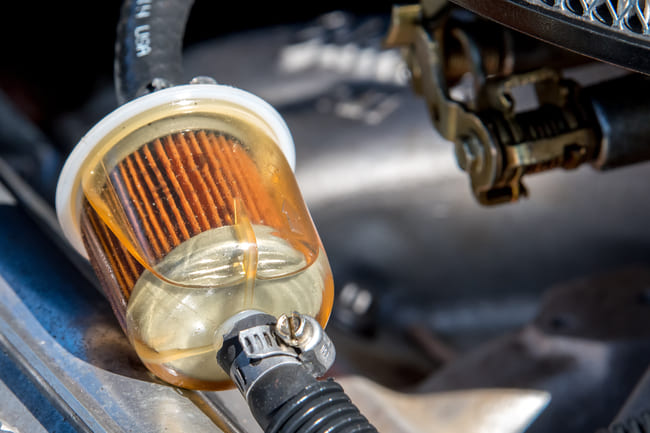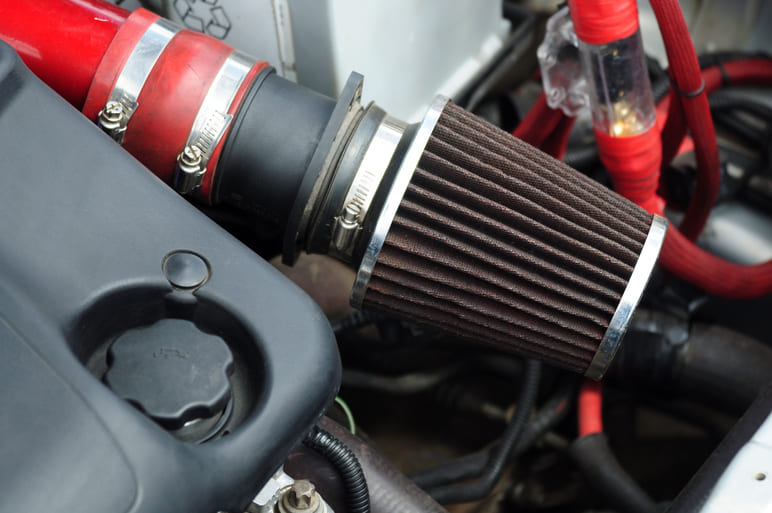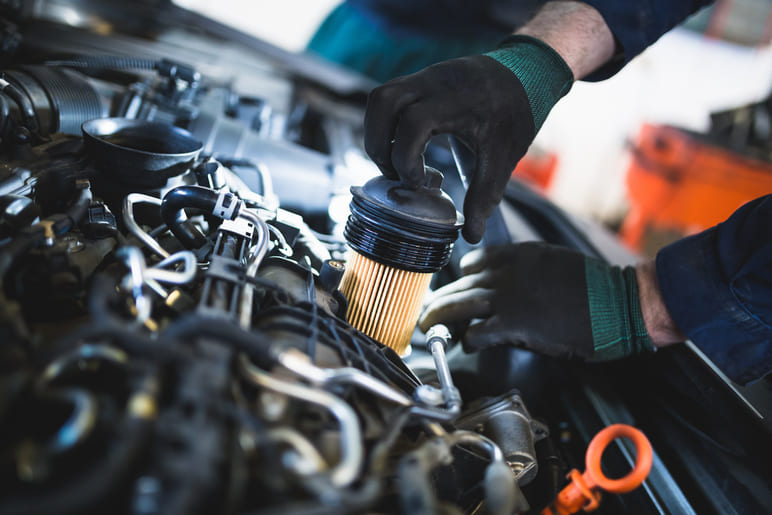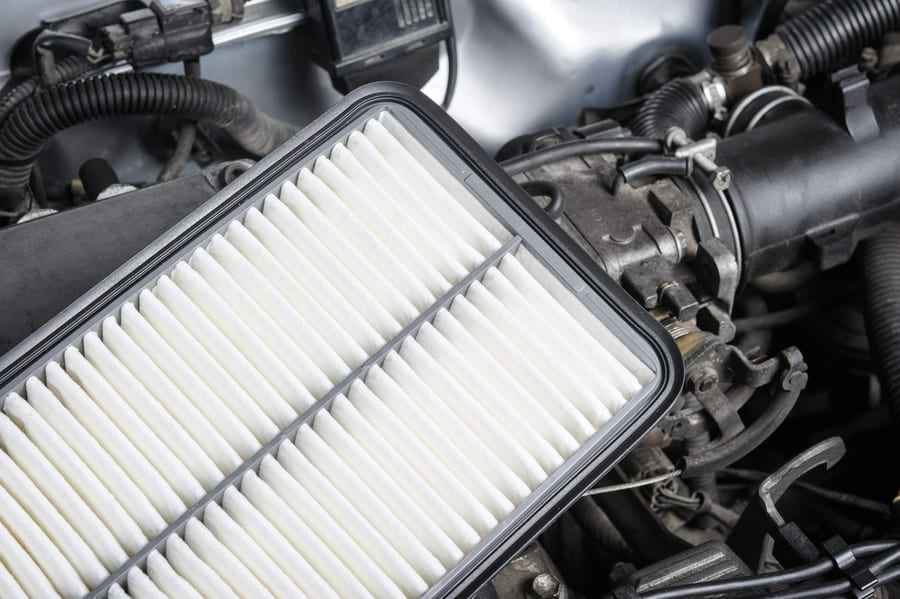
Fuel filters are a necessary part of contemporary internal combustion engines. Their primary function is to guard against rust particles and dirt and to regulate the flow of fuel and air into the engine. They are essential for protecting the environment by decreasing fuel consumption and emissions. Replacing or cleaning the fuel filter yourself can save you a lot of money because labour is expensive. For example, in the UK the cost of having one replaced averages £114. Therefore, being a do-it-yourself kind of car owner will have a positive effect on your wallet.
You will find the fuel filter inside the fuel tank in the opening of the fuel line, which supplies your car with petrol, or in the fuel line which is generally at the bottom of your vehicle.
How do I know if my fuel filter needs changing or replacing?
If your car begins to display the following warning signs: misfiring or an irregular idle, difficulty at low speeds and stalling, or loud noises from the fuel pump, you most likely have a blocked or clogged fuel filter, or perhaps water in the filter. Your car will tell you if there is an issue with your fuel filter. If the warning light comes on as soon as you start your car, it is time to change or unclog your filter. You may be tempted to continue driving with the warning light on, but it is important to get the filter drained as soon as possible. If you wait too long, water could build up and end up getting into your engine, where it can cause serious damage.
Fuel filter maintenance for optimum performance

Like many vehicle parts, fuel filters require regular maintenance. In order to maintain optimal performance, it is recommended that you replace your filter regularly. In the past, the recommended interval was every 20,000 to 30,000 miles. Nowadays, due to improvements to both vehicles and fuels, filters can be replaced every 60,000 miles. If your car uses a paper or nylon filter, you could just put in a new one. In the case that you have a metal filter, and it isn’t too dirty, you can just wash and use it again.
Removing your fuel filter
If you decide to clean the filter, there are some important steps to keep in mind. Firstly, only work on your car in a well-ventilated area. Look over the owner’s manual and locate your fuel pump fuse. Detach it, and then start up your engine, letting it run for about two minutes. Now turn your engine off and open the bonnet. Locate the negative terminal on your battery and using a spanner, detach the cable. Put the cable to the side of the battery to prevent it from accidentally touching its terminal.
Remember that if your terminals are red and black, the negative terminal is black. Not disconnecting the battery could cause sparks and ignite residue and petrol fumes that trickle from the fuel lines. Now locate the filter. As mentioned above, where it is located can differ by make and model. Most likely, you will find it underneath the car just behind the fuel pump. Sometimes, it is located within the engine bay. If it is necessary to raise your car, take a look at your manual to locate your vehicle’s jack points. Place a jack under one of the jack points and then press repeatedly or turn the handle to raise the vehicle. Use caution and do not depend on the jack to hold up the weight of your car, and do not work under a vehicle that is not held up by jack stands.
Put a container, such as a bucket, under the filter to hold any fuel that might spill. Next, detach the clips that attach the fuel line to the fuel filter. The precise design of the clips can differ depending on the model. Look in your manual, or online, for the design of your vehicle. You can use your hands to pull them out, or pop them out with a flathead screwdriver.
Detach the fuel lines by using a spanner or hose clamps to remove the fuel lines from the filter. Take the lines off the nozzles on both ends of the filter. When you disconnect the fuel lines, wear gloves and protective goggles to prevent injury. Be sure to point them toward your bucket or container to catch fuel that may trickle out. Now detach the filter from the bracket. You will either loosen the bolts that keep it fastened, or simply slide it out of the bracket. Make sure you pay attention to its position before you take it out, so that you’ll remember how to properly reinstall it.
Cleaning the filter
Some fuel may still be in the filter, so carefully drain both the fuel-in and fuel-out nozzles into the container you used to catch the spilt petrol. You will find these at each end of the filter.
Use a cleaner that comes with an application straw. Fasten the straw to the bottle or can’s spout and spray inside both of the nozzles. Carefully tap the filter against the receptacle you used to contain the spilt petrol. Allow the loose dirt, debris and spray to fall out of both nozzles. Repeat this procedure once more, and allow the filter to dry in the air for a minimum of one hour.
Reinstalling the fuel filter and final steps

To reinstall the filter, glide it back into the bracket in the proper position. Put back any bolts you took out, if necessary. Make certain that you have firmly reattached the lines to stop any leaks. Now reattach the clips that fasten the lines to the nozzles.
If required, put your car in a lower position and reconnect the fuse and the battery. In case you raised your car, jack it up more to remove the stands, and then lower it back to the ground. Use a spanner to reattach the cable on the battery’s negative terminal, and put back the fuel pump fuse.
Now that you have reconnected the fuse and the battery, allow your engine to run for some minutes. Due to the fuel system’s pressure needing to be restored, you might have to try a few times before it starts up. When it has started to run, look under your vehicle to see if it is leaking any fuel.
If you do see leaks, you will have to jack up the car again (if necessary), disconnect the battery and re-tighten the fuel lines. If, after some minutes, your engine doesn’t start, check your fuses again. In the case that the dome and dashboard lights aren’t turning on, or are dim, you may have to jump-start your battery. If the fuses and battery are working, check to see that the fuel lines aren’t loose and that you have put the filter back in the correct position.
Correct petrol disposal
Make sure that you get rid of the old petrol properly. If it isn’t too contaminated with dirt or debris, reusing it in petrol-fuelled equipment such as a leaf blower, is the environmentally friendly way to go. If it is full of debris and not reusable, put it into a container safe for petrol storage and bring it to a disposal centre. The container must be closed tightly while moving it – and remember it is extremely hazardous to light a fire, or to smoke, in the vicinity of flammable liquids.






Comment